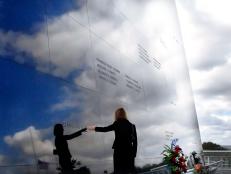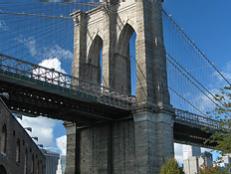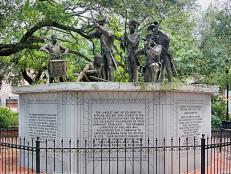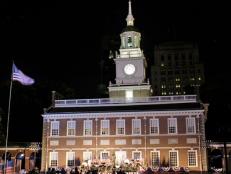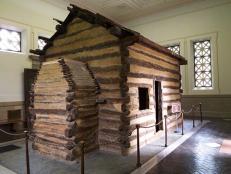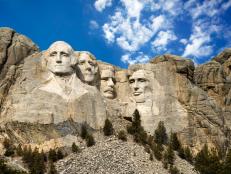US Memorials and Monuments
Related To:
lessRelated To:
Martin Luther King, Jr. Memorial
‘Out of the mountain of despair, a stone of hope.’ These words -- from MLK’s ‘I Have a Dream’ speech -- inform the design of the Martin Luther King, Jr. National Memorial. Unveiled in October 2011, the memorial is the first of its kind on the National Mall in Washington, DC, to honor an African-American leader.
9/11 Memorial
The single largest loss of civilian life on U.S. soil is commemorated at the 9/11 Memorial in N.Y.C. Located on the grounds where the Twin Towers once stood, bronze parapets are inscribed with the names of 2,983 individuals -- including John Robert Cruz, a 32-year-old employee of Cantor Fitzgerald who became engaged two weeks before the attacks.
Trail of Tears National Historic Trail
The Indian Removal Act of 1830 cast a long shadow on America. By 1837, 46,000 Native Americans had been removed from their homes in the southeastern U.S. Thousands died along the way from exposure to harsh winters, disease and starvation. Today, the Trail of Tears National Historic Trail runs through nine states, including Village Creek State Park in Arkansas.
USS Arizona
FDR declared Dec. 7, 1941, "a date which will live in infamy." The surprise military attack against the U.S. naval base at Pearl Harbor, Hawaii, shocked the nation. Today, the USS Arizona Memorial marks the resting place of 1,102 of the 1,177 sailors killed on the battleship that morning.
Lincoln Memorial
Inside a marble temple, Abraham Lincoln sits -- his gaze cast straight ahead upon the U.S. Capitol, a symbol of the Union he helped defend and preserve during this country’s bloodiest conflict. Today, the words of the 16th president’s greatest speech, the Gettysburg Address, live on, inscribed inside this stirring memorial.
Liberty Memorial
The Liberty Memorial in Kansas City, Missouri, remembers the "war to end all wars." The memorial also houses the National World War I Museum, which tells the story of the Great War through two theaters, exhibitions of period artifacts, replica trenches and more.
Mount Rushmore
Carved into the granite face of Mount Rushmore near Keystone, S.D., this national memorial commemorates America’s four greatest presidents. The idea came from a South Dakota historian who wanted to create a memorial that would attract people from all over the country. Today, nearly three million people visit each year.
Arlington National Cemetery
America’s most hallowed ground is the final resting place for more than 300,000 active-duty members of the U.S. armed forces. In addition to these rows of white marble headstones, the 624-acre grounds are home to many stirring memorials, most notably the Tomb of the Unknowns, as well as the graves of two U.S. presidents.
Korean War Veterans Memorial
Over 38 months, more than 54,000 American soldiers lost their lives defending South Korea. The Korean War Memorial honors those who served in this "Forgotten War." These 19 figures represent a squad on patrol, from each branch of the armed forces.
Statue of Liberty National Monument
Her torch held high, this Roman goddess of freedom was one of the first things that many immigrants who entered through New York’s Ellis Island saw. "I saw the Statue of Liberty," recalled one Greek immigrant, "And I said, ‘Give me a chance to prove that I am worth it, to be someone in America.'"
George Washington Birthplace
George Washington was born here, in Westmoreland County, Virginia, in 1732. The 662-acre property includes a family graveyard for five generations of the Washington family, including George Washington’s father, grandfather and paternal great-grandfather, who emigrated from England in 1657.
Gettysburg National Military Park
Nearly 8,000 soldiers died during the three-day Battle of Gettysburg. Today, hundreds of markers dot the battlefield -- including the State of Pennsylvania Monument. The largest monument on the grounds, it commemorates the 34,530 Pennsylvania soldiers who served in battle -- the single largest group of Union forces to do so.
Manzanar National Historic Site
During World War II, more than 110,000 Japanese residents of the U.S. -- two-thirds of them U.S. citizens -- were forced into remote, military-style camps. Manzanar National Historic Site is one of 10 internment camp locations that have been preserved. More than 135 internees died at Manzanar. In 1943, internees erected this cement memorial -- its words loosely translate as, "This is the place of consolation for the spirit of all mankind."
Little Bighorn Battlefield National Monument
For decades, this battlefield in Montana was named after Gen. George Custer -- and told just one side of the story of the battle between U.S. and the Native American forces here. Then, legislation signed in 1991 renamed the park Little Bighorn Battlefield National Monument. The law also said that a Native American memorial should be built on the grounds -- this sculpture by an Oglala Sioux artist is one of the results.
Fort McHenry
This year marks the 205th anniversary of the War of 1812. Remember it with a visit to this star-shaped fort that successfully defended Baltimore Harbor from the British. During the bombardment of the fort, an American lawyer named Francis Scott Key was inspired to write what would become the national anthem.
Vietnam Veterans Memorial
More than 58,000 names are inscribed on this black granite wall. Each name is listed in the order in which they were reported to have died or gone missing in action. For surviving vets, the wall is the closest thing to an address that many have to pay their respects. Mementoes such as baseball mitts, notes and old photos are often left at the wall.
